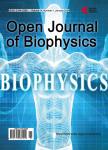On the State of Stress in the Growth Plate under Physiologic Compressive Loading
On the State of Stress in the Growth Plate under Physiologic Compressive Loading作者机构:Department of Mechanical Engineering Biomedical Engineering The University of Memphis Memphis USA
出 版 物:《Open Journal of Biophysics》 (生物物理学期刊(英文))
年 卷 期:2014年第4卷第1期
页 面:13-21页
学科分类:1002[医学-临床医学] 100214[医学-肿瘤学] 10[医学]
主 题:Growth Plate Physis Cartilage Mechanical Properties Finite Element Analysis
摘 要:The growth plate is a thin layer of cartilage sandwiched between epiphyseal and metaphyseal bone and is the location of active bone growth during childhood. It is subjected to large compressive and shear forces while protecting its resident chondrocytes from damage. We believe that computational modeling can help us better understand how the macro-scale loads are transmitted to micro-scale stresses and strains within the growth plate cartilage. As a first step in this process we analyzed the mechanical response of compression experiments performed on bovine bone/growth plate/bone samples. We endeavored to estimate the modulus of elasticity of the growth plate itself by simulating the compression experiments of these specimens using the finite element method. It is shown that when the growth plate in the compression specimens was modeled as a flat layer, the state of stress in the cartilage was triaxial and non-uniform with the hydrostatic stress being much greater than the octahedral shear stress over most of the central region of the growth plate test samples. The computational models accounted for variations in the average cartilage thickness, the non-uniaxial, non-uniform and triaxial state of stress in the thin cartilage layer, and for the estimated extrinsic compliance resulting from compression of the variable heights of bone on either side of the growth plate cartilage. However, due to lack of information on the internal structure of each sample, the models did not account for the variations in the non-flat topography of the growth plates. The models also did not include the calcified cartilage layer. Further model development is recommendedin order to determine the degree to which accounting for the complex growth plate topography influences the predicted cartilage modulus of elasticity.



